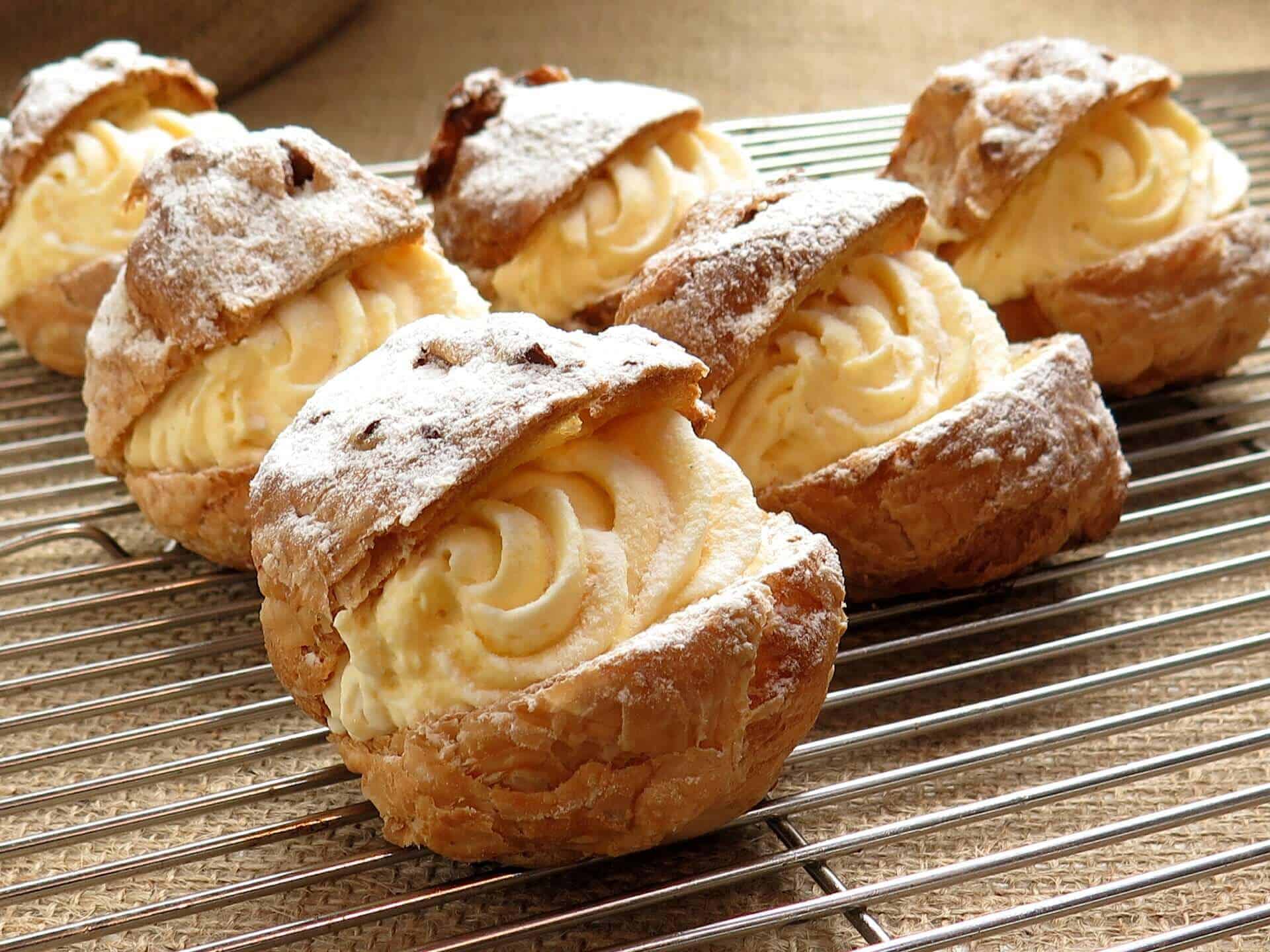Description
A profiterole cream puff (US), or choux à la crème is a filled French choux pastry ball with a typically sweet and moist filling of whipped cream, custard, pastry cream, or (particularly in the US) ice cream. The puffs may be decorated or left plain or garnished with chocolate sauce, caramel, or a dusting of powdered sugar. Savory profiterole are also made, filled with pureed meats, cheese, and so on. These were formerly common garnishes for soups.
The various names may be associated with particular variants of filling or sauce in different places.
First, the chef must prepare choux pastry dough, a light pastry dough used to make profiteroles, croquembouches, éclairs, French crullers, beignets, St. Honoré cake, quenelles, Parisian gnocchi, dumplings, gougères, chouquettes and craquelins. It contains only butter, water, flour and eggs. Instead of a raising agent, it employs high moisture content to create steam during cooking to puff the pastry. The pastry is used in many European and European-derived cuisines.
The choux pastry paste is piped through a pastry bag or dropped with a pair of spoons into small balls and baked to form largely hollow puffs. After cooling, the baked profiteroles are injected with filling using a pastry bag and narrow piping tip, or by slicing off the top, filling them, and reassembling. For sweet profiteroles, additional glazes or decorations may then be added.
The most common presentations are pastry cream, whipped cream, or ice cream filling, topped with powdered sugar or chocolate ganache and possibly more whipped cream. They are also served plain, with a crisp caramel glaze, iced, or with fruit.
Filled and glazed with caramel, they are assembled into a type of pièce montée called croquembouches, often served at weddings in France and Italy, during the Christmas holiday in France, and are served during important celebrations in Gibraltar. Profiteroles are also used as the outer wall of St. Honoré Cake.
The word profiterole (also spelled prophitrole, profitrolle, profiterolle)has existed in English since 1604, borrowed from French. The original meaning in both English and French is unclear, but later it came to mean a kind of roll ‘baked under the ashes’. A 17th-century French recipe for a Potage de profiteolles or profiterolles describes a soup of dried small breads (presumably the profiteroles) simmered in almond broth and garnished with coxscombs, truffles, and so on.The current meaning is only clearly attested in the 19th century. Although both the pastry and the name profiterole initially came from France, profiteroles are one of the main national dishes in Gibraltar.
Cake is often served as a celebratory dish on ceremonial occasions, such as weddings, anniversaries, and birthdays. There are countless cake recipes; some are bread-like, some are rich and elaborate, and many are centuries old. Cake making is no longer a complicated procedure; while at one time considerable labor went into cake making (particularly the whisking of egg foams), baking equipment and directions have been simplified so that even the most amateur cook may bake a cake.
The Greeks invented beer as a leavener, frying fritters in olive oil, and cheesecakes using goat’s milk.In ancient Rome, basic bread dough was sometimes enriched with butter, eggs, and honey, which produced a sweet and cake-like baked good. Latin poet Ovid refers his and his brother’s birthday party and cake in his first book of exile, Tristia.
Early cakes in England were also essentially bread: the most obvious differences between a “cake” and “bread” were the round, flat shape of the cakes, and the cooking method, which turned cakes over once while cooking, while bread was left upright throughout the baking process.
Sponge cakes, leavened with beaten eggs, originated during the Renaissance, possibly in Spain.
During the Great Depression, there was a surplus of molasses and the need to provide easily made food to millions of economically depressed people in the United States. One company patented a cake-bread mix in order to deal with this economic situation, and thereby established the first line of cake in a box. In so doing, cake as it is known today became a mass-produced good rather than a home- or bakery-made specialty.

Reviews
There are no reviews yet.